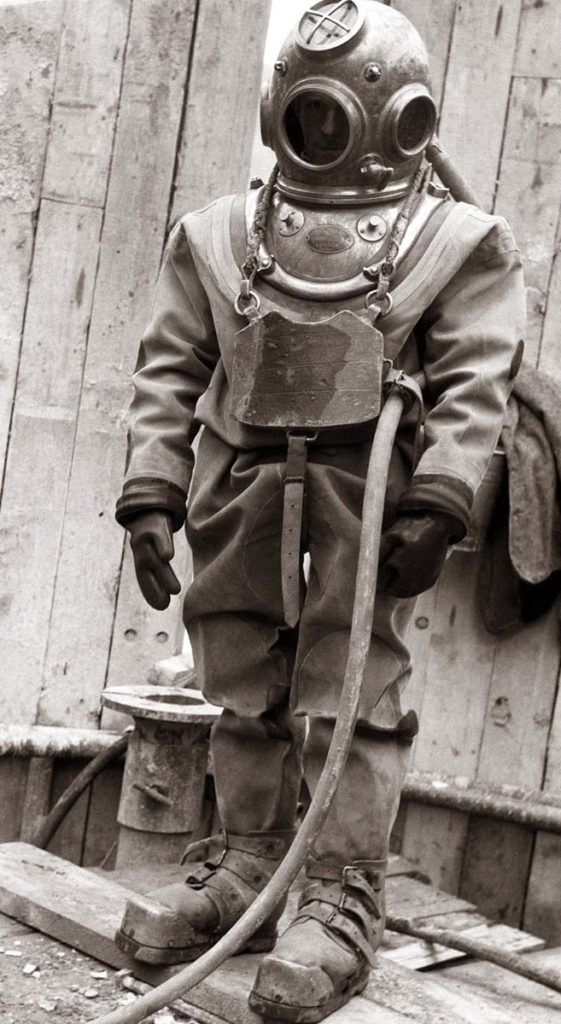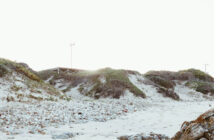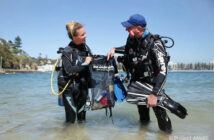David Dobbin was born in St. Mary’s on October 25, 1817. As he grew to be a man his friends would call him Davy. History would remember him as Dobbin the Diver.
As with most boys of his time, in the absence of other opportunities, Davy took to the sea, fishing the cod. In his case, he started at age 13, which wasn’t uncommon. Around that time his father sailed away on a fishing trip to the Labrador. Word eventually got back to the family that he was swept overboard during a storm and lost to the raging ocean. This too was not uncommon back in the days of wooden ships and iron men. But there is precious little time to morn and mope. Life goes on. Young Davy now carried the responsibility of providing for his mom and his younger brother and sister.
Davy had a crush on Clara, the girl next door, and looking down the road of his life, he expected that the day would come when he would marry her and have a family too. After all, the feelings between them were mutual.
Davey grew up to be big and strong. He was also courageous, daring and fearless. By the age of 16 he was steering schooners to and from the fishing grounds for their owners and by 18 he owned his own Grand Bank Schooner, painted white with blue trim. He proudly called her The Hero. But the undependability of the prices and availability of the cod kept Davy alert for the possibilities of other more lucrative opportunities to pursue. He wanted a better standard of living for his mother, his siblings, and eventually Clara and any children they might have.
An opportunity came in the form of a man from Nova Scotia named Smith McKay, who owned a salvage operation in St. John’s, Newfoundland. One day a small schooner belonging to McKay ran aground near St. Mary’s. Davy met the man and agreed to help him re-float her. McKay liked the way Davy worked and engaged him to help with some other projects of salvaging ships that had foundered in shallow water. McKay paid him well for his efforts.
In the meantime, McKay was following the development of new diving suits that were now used in other parts of the world. He showed Davy all the information he had collected on the suits and asked him if he were to purchase one, would he be willing to give it a try. He had approached others for this task but so far no one had the nerve to take a chance on descending to the ocean floor in that contraption. That would be just asking for trouble, they countered. But Davy’s response was “Yes Sir, you go ahead and buy that suit and I’ll give it a go.” The suit was made from waterproof canvas, had weighted boots, and a large helmet with a hose attached so that men on the deck of the supporting schooner could pump down fresh air to the diver. Davy turned the Hero over to his soon-to-be brother-in-law John for a percentage of the catch, and he ventured into the salvage business with Smith McKay.
From the first dive, Davy proved to be a natural. He was fearless. Chances are that he was the first Newfoundland diver. The partnership of Davy Dobbin and Smith McKay prospered as he dove from McKay’s schooner, the Responsible, and salvaged from wrecks along the Newfoundland and Nova Scotia coast and even up as far as Montreal. Dobbin the Diver earned a stellar reputation in the salvage business and became well-known on the east coast.
On one notable occasion Diver, Dobbin was called upon to solve a mystery. One spring morning eight men and one woman rowed ashore in a lifeboat near Burin, across Placentia Bay from St. Mary’s. They told the local people they were the only survivors from the vessel SS Commerskie that had run aground and sank nearby during the night. Among them were the Captain and his “wife”. People took them into their homes and they lingered around town for several days, long enough for the locals to size them up, and they started to have doubts about the truth of their story. Why hadn’t any bodies washed ashore? Why were they in such a merry mood? Where did they get all the money they were flashing around? It all seemed a bit fishy! Concerned fishermen went out in their small boats and easily located the underwater wreck of the ship.
They needed some specialized help after that so they contacted Smith McKay and Davy Dobbin, who were willing to assist. The first thing that courageous Davy Dobbin noticed when he descended to the ship was the eerie scene of the bodies of a woman and several men tied to the ship’s railing. He went below deck and saw that the door to the passengers’ quarters was nailed shut. He managed to pry it open and to his horror, he found dead bodies all over the place. This was indeed a crime scene. Over a period of two days they pulled up seventy-two bodies of men and women from that ship of death, and they respectfully laid them to rest in a spot called The Plantation.
By now the eight survivors that rowed to shore, had returned to England. When the authorities sent the report of Dobbin’s findings to England the eight were arrested and tried for murder. The trial concluded that they were all guilty of murder and were sent to the gallows. The story that came out during the trial, was that the Captain and crew were transporting wealthy Dutch immigrants to America. At the beginning of the voyage, the Captain had talked the passengers into giving him their valuables to place in his cabin for safekeeping. During the course of the voyage, the Captain gave into evil temptation. He and several of his men schemed to keep the treasure and forever silence its proper owners.
The Captain’s wife was indeed on the trip, but she did not survive. Her body was one tied to the ship’s rail. Instead, he had saved the life of another young woman whom he had lusted after and “called” his wife. These eight survivors might have gotten away with this macabre affair too if it wasn’t for the daring of diving pioneer, Davy Dobbin.
After fourteen years of diving, Davy Dobbin’s health declined because of it so he retired as a diver, much to the relief of his now-wife Clara and their four daughters. He had done very well financially from his diving expeditions, collecting gold, silver and other precious items from the bottom of the sea. By now he had purchased a house in St. John’s and was living there.
Davy moved back to St. Mary’s and spent a season fishing with John on the Hero. Smith McKay moved on too and became a partner in C.F. Bennet Company which operated a copper mine in Tilt Cove, Notre Dame Bay. He soon sent for his friend Davy who moved his family from St. Mary’s to Tilt Cove and worked in the mine. After his retirement from the mines he fished for several years out of Little Bay and then Dobbin the Diver moved to St. John’s where he lived out his days, until his death in 1893.
Smith McKay eventually turned to politics and represented Twillingate-Fogo in the House of Assembly for two terms. He died while still in office.
David Dobbin, The Diver, a Newfoundland Legend.
Article Submitted by Bruce Roberts.









